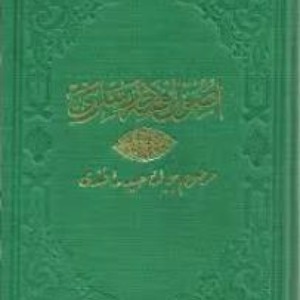
Jurist, educator, poet (B.1837, Istanbul- D. 1903, Istanbul).
He is also known as Haydar Molla and is one of the Ottoman jurists of the last
period. He was known with this name so that he was not confused with
contemporary Ali Haydar Efendi who wrote an interpretation of Mecelle (T.N. Ottoman Constitution).
Both were confused with each other because of their works on fiqh and mecelle;
however in order to prevent confusion after their death one of them was called
“Büyük (T.N. Old) Haydar Efendi” and the other “Küçük (T.N Young) Haydar
Efendi” due to their ages. Büyük Ali Haydar Efendi who was also known as Nasghızade
is the son of Mehmed Nasgman Efendi who was born in Kastamonu and belonged to
high society of Rumeli and was one of the clerks of Military Court. He
memorized the Holy Koran in primary school where he started his primary
education and later completed his education in Darülmaarif-i Rüşdiye (
Ali Haydar Efendi who could speak Turkish, Arabic and Persian worked in various positions starting from the 13th of October 1955 such as fiqh teacher, director of law school, ombudsman, inspector of judges, vice prefect, judge, president of court of appeal, member of inspection assembly of Islamic law, administrative and reform officer of foundations, member of mecelle association, member of council of state, teacher of mecelle at law school, head of the grand education assembly, fiqh methodology teacher at law school and minister of Islamic Community of Eastern Rumeli.
Ali Haydar Efendi was granted following orders and ranks as a teacher, scholar and statesman: Mudarris, Mudarris of Süleymaniye, Mawlawi of Sivas, Mawlawi of Izmir, Mawlawi of Haremeyn-i Muhteremeyn, Judge of Istanbul and Kazasker.
Ali Haydar Efendi was given a 3rd degree Meddi order and he was appointed as the President of the Assembly in 1884 replacing the Minister of Public Education Mustafa Nuri Pasha who was also President of Kebır-i Maarif (the Grand Education Parliament) between 1883 and 1884. The reason for why Ali Haydar Efendi was appointed as the President of the Grand Assembly of Education instead of Minister was to systemize works related to education which did not proceed as requested.
At that time around 90 constructions
of High Schools were on progress in
Ali Haydar Efendi, the President of the Grand Assembly of Education mentioned the regrettable situation of training colleges in countryside in a document dated 1888 as following; “Schools which need attention are the ones in countryside more than the ones in Istanbul. It is necessary to open Boys Training Schools with the name ‘Medrese-i Muallimin’ in town centers in order to recruit teachers to these places who know new methods". Training Schools, opened until that date, were usually filled with imams or madrasah students and they did not have teachers and students sometimes. Several solution ways were suggested in the education commission gathered under the leadership of Ali Haydar Efendi.
There were some important
developments in Turkish educational system during Ali Haydar Efendi’s
presidency of Assembly of Education which were: Foundation of School for Mutes
(1889), Foundation of School for Blinds (1890), Reorganization of
Darü1Muallimin with branches such as Primary School, High School and Higher
School (the first higher training school – 1891, publication of the first
education yearbook (annual) 1898) and without a doubt the most importantly,
reopening of Darülfünun (university) which would not be closed again (l900). The most important
criticism about Büyük Ali Haydar Efendi, who had great contributions to these
successful developments and therefore was regarded by many as a “supporter of
progress”, was against his request for the removal of Roman Law courses from
Büyük Ali Haydar Efendi who gave
lectures of Mecelle and Fiqh Methodology in
Ali Haydar Efendi, who was a poet at
the same time, owes his reputation mainly to fiqh methodology. One part of his
lectures in
Büyük Haydar Efendi published
besides a booklet on the orders of Muslims living in
WORKS:
Divançe, Usûl-i Fıkh (Lithography 1890, new edition with the title “Usul-i Fıkıh Dersleri” (1966) ), Romanya, Bulgaristan, Sırbistan, Yunanistan ile Bosna-Hersek ve Karadağ’da Bulunan Müslümanların Mezhep Durumlarına Dair Risale.